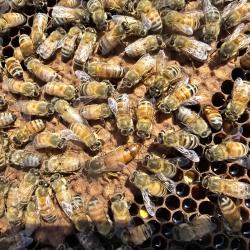Building prolific ant legions takes tons of resources—but a new study finds that certain species cut corners by skimping out on protective armor.




As 2025 comes to a close, take some time to revisit our most-read stories of the year and discover some that you may have missed.

Eric Malcolm of the UMD Bee Lab sheds light on how honey bees plan and perform remarkable feats of survival during the coldest time of year—and what we can do to help them.

UMD mathematicians identified vaccination strategies that could completely eliminate HPV-related cancers.

After 37 years at UMD, she reflects on decades of department growth, research innovation and mentorship.

The dual-degree student in computer science and international relations plans to pursue master’s degrees in global security and cybersecurity.

Jenan El-Hifnawi (B.S. ’22, biological sciences) is a master’s student in the University of Maryland’s Department of Entomology.

A new University of Maryland study of campus air samples revealed that chemical compounds from Canada’s historic 2023 fires lingered in the air, forming an ‘atmospheric soup.’

UMD Chemistry and Biochemistry Associate Professor Ling Hao is on a quest to decode the molecular changes that cause neurodegenerative conditions like Alzheimer’s and Parkinson’s diseases.

New University of Maryland research suggests that dinosaur parenting strategy fundamentally reshaped the Mesozoic world, with “latchkey kid dinosaurs” filling ecological niches their parents did not.
